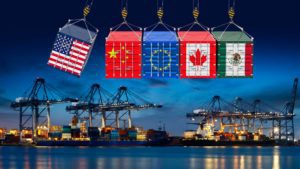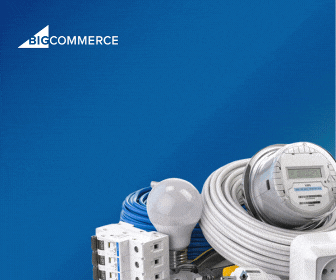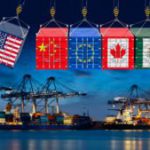Competing, and Winning, in a Tariff Induced World
 It appears the initial tariff volleys have ended and we’re in for trench warfare for the next 60-90 days while deals get negotiated. The Eastern front will remain volatile given neither party will whisper “uncle” given that China is launching asymmetrical warfare as it broadens the issue from goods to services (which was to be expected.)
It appears the initial tariff volleys have ended and we’re in for trench warfare for the next 60-90 days while deals get negotiated. The Eastern front will remain volatile given neither party will whisper “uncle” given that China is launching asymmetrical warfare as it broadens the issue from goods to services (which was to be expected.)
Given that the word “decoupling” is being more frequently mentioned by economists and analysts, perhaps now is the time to think about the future.
If we’re in a war, and after all this is being called a “trade war”, perhaps we need to look at military history as a guide?
Historically our allies are Canada, Europe, Australia, Japan and selected other countries. Some sit on the sidelines (at least publicly) and others sit out or oppose US interests. Those who historically are “out” are Russia and China.
Think about the Middle East and other military campaigns. Think about Covid.
And with Covid, which was during the first Trump administration, companies talked about shortening supply chains and regionalizing manufacturing.
Some did. Most didn’t. Some moved manufacturing to Mexico … including many Chinese companies.
Perhaps companies change and this becomes the future of commerce, at least while the parties / people in control in key countries remain steadfast. We hear of companies making major (multi-billion dollar) commitments. Will they all deliver? Who knows, especially since a number of the commitments are beyond the next election horizon and construction, let alone staffing, takes time.
Right now, distributors are caught in a crossfire. We know the current state of tariffs. We’re told the “worst case” future state of tariffs / what they could be in 90 days. We wake up daily to either new negotiations with XYZ country or perhaps talk of new tariffs. We’re living in a state of potential constant change (almost like the state of Jello!) as politicians plan the economy in the media. (And now there is word / rumors that one trade deal is done … so ready for more change?)
And, at the same time, manufacturers are making pronouncements on price increases so they can get ahead of the curve (but what will happen if their tariff assumptions are not realized? Will they have price decreases? (anyone want to take bets?!) Distributors will ask about formulas for price increases and where products originate from, however, manufacturer salespeople, and even management, only know so much. Those making the pricing decisions are rarely available or will share the information.
The only way prices will probably decline is the old-fashioned way … through competition or negotiating SPAs (Special Pricing Agreements / Ship and Debit)!
But we’ll deal with this after July 1st.
More importantly …
Recognizing that this is the state, and the possible outcome, what should distributors do?
Competing in a Tariff-driven Electrical Distribution Marketplace
The one thing that we do know is that electrical distributors need to deal with the here and now. Perhaps there are opportunities to win future business, but how do you plan to compete in the near future?
The key takeaway is that distributors need to reevaluate key functional areas with executive management pushing for change … change in thinking.
Doing business the way you did it will not drive profitable growth.
Now you need to be intentional and prescriptive within your organization.
You need to be critical in your thinking.
What do I mean?
Consider:
- Sales needs to promote your value proposition but, more importantly, it needs to promote the value proposition / benefit of products defined as “how it saves the customer money (and remember, time = money.) Every customer’s project nowadays is going to be over budget. Show how your recommendation (product, service) will benefit them. If you don’t show them, then they will migrate to the lowest price, not to the best option.
- Marketing needs to sharpen the pencil and be in a monetization mode. It needs to promote “why” the promoted product / offering, not “what” it is. It also needs to target growth segments and develop strategies to help your company take share. Further, it should be leading your market research efforts … what questions need to be asked of customers to inquire about their needs? About your customer’s customers? What ideas are they bringing to you? To your suppliers?
- Purchasing needs everyone to “feel” for them due to the amount of price changes that are needed … and then more will be needed when tariffs change again. But, they also need to ensure you have COO (country of origin) in your system. Further, and this is tough given how much is on their plate, they need to recommend a supplier strategy. What worked in the past may not work in the future. Consider a tiered supplier strategy based upon value proposition, volume, value. Different suppliers for each. And seek tariff-friendly lines (or SKUs based upon COO) to have price-friendly lines for your customers. You may even consider a “tariff-friendly” line card, even if only for internal usage!
- Pricing strategy matters. Right now, is a transition period as customers are asking for your help to protect them on projects they have quoted / working on. This is called “negotiation.” If you help, what does that mean for the future? With suppliers doing price increases for “immediate shipments” they are really protecting their replacement costs (after all, don’t they have something in their warehouse?) But it is what it is. Longer-term, SPAs will be important. Making sure your T&C’s are maintained is important. Don’t allow random overrides. Price consistency is more important than ever across branches, salespeople, and modes of ordering. Watch for account-specific and line-specific (even SKU-specific) margin erosion.
Longer-term, and tariffs will be the impetus for this to finally occur, category management will be more important. This will segment purchasing and pricing responsibilities. Metrics become more important. Suppliers will need to tighten the “why us and why this” messaging.” Distributor purchasing people will compare and contrast to determine what to “put on their shelves” and sales will need to “sell” the offering. If manufacturers don’t differentiate themselves, they will further become commodities.
There are also “second degree” issues that will eventually need to be addressed relating to compensation and rebates. This will relate to sales, growth, and units. What to pay on, which means “what to measure” … but all of this is difficult to do mid-year and in such a volatile environment. As things settle down … second half of the year(?) companies will begin considering this for 2026.
What tariffs will do is get everyone to focus on the “basics of the business” … sharpen your tools.
This needs to happen while simultaneously investing in your digital evolution, and investment, path for many reasons but … if you don’t change “the front of your house” and reinvent “the basics”, investing and implementing in new tools and processes is only responding to yesterday.
The digital tools will enable you to further optimize your business. Right now, it is “all hands-on deck” to focus the business. There is customers to serve, share to take.
The media cycle is showing concern and hope and concern and hope and .. Don’t overact (which seemingly some manufacturers are.) Most distributors work in local markets. History says some will “go with the flow,” some will over-react, and some will see opportunities and take advantage of them.
Which will you / your company be?
If we can help, share an idea, or offer a 3rd party perspective, reach out to us at Channel Marketing Group.























